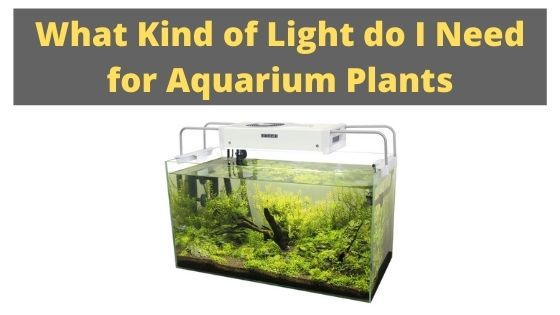Aquarium plants are a great way of bringing your aquarium to life. They add a green, authentic style to your aquarium while also providing a playground for your fish to swim around and hide in. Aquarium plants are also beneficial for the health of your aquarium water, as they provide important nutrients to the water. They consume the Carbon Dioxide that is in the water, and in turn release oxygen to help your fish breathe. Lastly, some breeds of fish can actually feed on certain aquarium plants, so you can save money on buying fish food.
If you are going to get aquarium plants, it is essential that you purchase a light for your aquarium. The light will provide the essential light energy that is usually provided naturally by the sun. Regular house lights or lights for houseplants are not sufficient because they do not travel far enough into the water. When using these lights, plants near the bottom will not get enough sunlight and will die.
What kind of light do I need for aquarium plants
There are three different kinds of light you can use for aquarium plants. We will describe their metrics and functions below.
LED Light for Aquarium Plants
LED (Light Emitting Diode) are becoming the most popular lights for aquarium plants. While they are usually the most expensive, you save money in the long run because they use a lot less energy than the other types of aquarium plant lights. LED lights usually come with an adjustable setting where you can choose how bright you want it to be. They can reach just about any level you need, and a normal LCD light can spread its light to plants that are at the bottom of a 2 foot deep tank. LED bulbs also last for a very long time before you have to replace them.
Incandescent Light
These lights are only good for smaller fish tanks (under 10 gallons). These lights can release a decent amount of heat, so they are most often used in warmer tanks such as tropical aquariums.
Compact Fluorescents
These bulbs are similar to LED’s in that they emit a lot of light while not releasing a lot of heat into the aquarium water. While they are not as efficient as LED lights when it comes to energy emission, they can sometimes emit stronger light to reach further down into your fish tank.
How to measure light in a fish tank
Most aquarium plants require a certain amount of light to be healthy and grow in an aquarium. This measure of light is called PAR (Photosynthetically Active Radiation). The higher the PAR, the more light and energy the light releases. While you want a PAR that is high enough to give your plants adequate light, a PAR that is too high can fry your plants.
What is the perfect PAR for aquarium lights?
The best PAR for aquarium lights is between 6000k and 7000k. This is because most people believe this range is the most similar to what the sun naturally emits to plants underwater.
